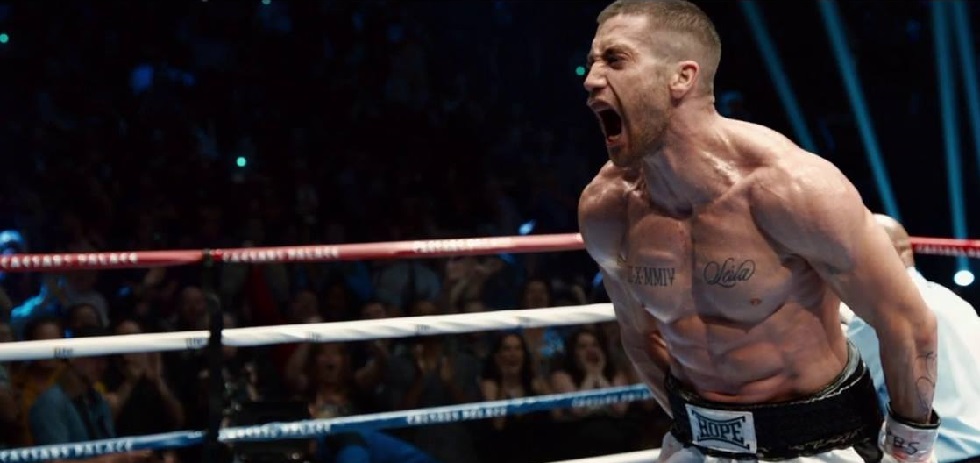The boxing film is, for whatever reason, ingrained somewhere in the filmmaking consciousness, and its revival every few years always stirs an excitement in me. Southpaw, the latest Jake Gyllenhaal vehicle,1 tragically misunderstands the formula. It’s a too-ready appropriation of every boxing trope (‘the redemptive power of love’, ‘the new coach’, ‘the hungry young challenger’), re-arranged into an unexplainable hodge-podge that will leave audiences perplexed before it ever engages them.
Since Raging Bull the boxing film has been evaluated on how viscerally the audience feels the punches, and here Southpaw fluctuates between generally effective long takes of action in the ring, and a surreal stream of highlight close-ups that only plasticise the action, reducing it to the weight of a video game. Here, the genuinely kinetic quality of Gyllenhaal’s movements—especially in the latter stages of the film—are undermined by point of view shots or reactions from the crowd. While another film might have conjured some emotional currency out of these reactions (think Adrian in Rocky), Southpaw fails on account of its refusal to establish relationships in the early periods of the film. The emotional contour of the piece is wrecked long before Gyllenhaal enters the ring.
The story can be summarised as follows: Billy Hope (Gyllenhaal) is a championship boxer whose success boils down to a strategy of “get punched until you’re angry enough, and then punch them out”. He met his wife, Maureen, when they were both orphans in the New York City foster system (this is, of course, told to us by a fight commentator rather than shown or explored). Their relationship is given no visual anchoring beyond the present: they embrace, they look at one another; and then they have sex. She’s implied to be the only figure capable of cooling him, which places an immediate timer on their relationship. But the relationships is ineffectual for its lack of engagement. We’re not given proper time to empathise with Hope, much less his wife, and so when things do go south, they’re meaningless to us.
Worse still, the major turning point of the film (a shooting at a charity auction), is so logically inconsistent with the world constructed by the film and also so unexpected, that the audience ends up at odds with the script. The idea that a shooting could take place in the middle of a hotel, with no witnesses and no camera footage, and that the film could continue without ever broaching the subject of guilt is infuriating. What follows is similarly so: Hope loses all of his money in a vague fashion, and then his belt the same way, prompting him to seek out a wise trainer with no ties to Hope beyond those that are loosely exposited after the fact.
The narrative has all the coherence of those awful deus ex machinas in Shakespeare’s middle period: the ones where out of nowhere every ship just crashes, or where problems can be resolved by saying a wizard did it. The script is constructed in such a way to reduce Hope to that immaterial boxing film stuff that can then be re-constructed by a wise old trainer (Forest Whitaker) but this is just Rocky III all over again. The only difference? We already had two films to empathise with Rocky, with Billy Hope we get fifteen minutes.
The soundtrack—curated by Eminem—shallowly intimates towards the climax of “Eye of the Tiger”, but the training montages are short, and somehow fail to gift any sense of progression or improvement. The film is sloppily edited, and the performances are gratuitous in the way they signpost even the subtlest emotional shift to the crowd. There’s a scene, early on, when Billy Hope’s hit his red hot peak and begins screaming and gesticulating towards the cameras.
Never have I felt the dividing line of the cinema screen so profoundly. Like watching a carnival amusement from behind a layer of plexiglass, I felt acutely dulled by the experience, despite the bells and whistles telling me I should feel otherwise.

